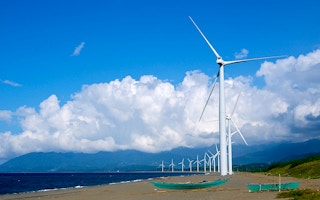The travel details of the huge number of world leaders, company CEOs, and investors who made their way to Glasgow for the latest United Nations Climate Change Conference (COP26) may seem trivial.
The carbon footprint of their transport of choice – plane, car, or train – or the size of their entourage pales in importance when compared to that of the agreements they hope to achieve. But the reality is that without careful planning of the journey, it would have been impossible to bring these people together for this essential event.
The same can be said of the explosion of interest by investors and companies in committing to reach net-zero carbon dioxide emissions by 2050. The Glasgow Financial Alliance for Net Zero initiative, launched in April, now represents over 450 financial firms responsible for assets of roughly US$130 trillion that are committed to achieving net zero by 2050 or sooner.
These promises are significant, but they leave financial markets in an interesting position. There is considerable information about companies’ long-term climate goals, but very little about the near-term steps they will take to achieve them.
To put this in context, imagine that a company publishes a 2050 revenue forecast but provides few details about its 2025 revenue projections, how the business will scale over time, or its short-term strategy. In order to appraise the credibility of companies’ pledges, investors need more details on near-term planning up to 2025 and how these actions will advance the 2050 net-zero goal.
The emphasis on 2025 reflects that year’s potential to mark a tipping point for the net-zero transition. S&P Global’s Platts Future Energy Outlooks indicates that the world must move faster to curb emissions and show concrete progress by that year or risk overshooting a 2° Celsius rise in average global temperatures, relative to preindustrial levels.
To avoid this outcome, almost all economic sectors – from heavy industry to transport – would need to reduce total annual emissions to below 2019 levels by 2025, and supplies from wind and solar would need to increase 133 per cent and 98 per cent, respectively, from 2019 levels.
As with any significant transition, a balance of risk and opportunity is at play in the green economic transition, and demand for comparable and consistent scenario analysis continues to rise as companies seek to unlock capital and investors seek to align their portfolio strategies with the goals of the 2015 Paris climate agreement.
With the world’s assets under management increasingly committed to the net-zero goal, and active engagement by investors supplanting passive stewardship, successful companies will be those that share detailed plans for this transition.
This represents a real opportunity for progressive companies to access capital directly from institutional investors and through increasingly popular environmental, social, and governance (ESG) or sustainability-focused indices. (Assets in European sustainability-focused passive funds trebled in 2020.)
The opportunities for investors in companies engaged in the green transition are clear. What about the risks?
ESG factors can and do influence credit quality, specifically the ability and willingness of borrowers to meet financial commitments. These criteria played a prominent role in creditworthiness – and therefore in S&P Global credit ratings – well before they were grouped together and became a composite indicator more than a decade ago.
At times, ESG considerations will affect an entire industry’s prospects. This year, S&P Global Ratings updated its risk assessment for the oil and gas industry to incorporate several increasingly material risks, including the energy transition.
Such risks will be increasingly salient. In August, UN Secretary-General António Guterres called the publication of the most recent Intergovernmental Panel on Climate Change report a “code red for humanity.” What does this mean for companies and investors?
According to data from S&P Global Trucost, physical assets owned by the utilities, materials, energy, consumer staples, and health-care sectors will face the greatest climate-related risks in 2050, with 66 per cent of the market cap of the S&P 1200 holding assets at high risk.
Water stress will be the biggest climate-related hazard to assets by 2050, especially for the utilities and materials sectors. And corporate infrastructure in Asia, East Asia, the Middle East, and North America is most exposed to severe weather events and other adverse effects of climate change.
The sense of urgency is clear, and both businesses and investors will increasingly need access to high-quality data and advanced analytics to understand and address climate-related risks and develop credible adaptation plans.
Significant progress has been made in the last 12 months, but to achieve net zero by 2050, a clearer focus on near-term planning and more transparency about strategy is required.
For the moment, the destination has been set, but the route to get there is still being defined. Companies should be applauded for setting ambitious climate goals, but, like the leaders planning their journeys to Glasgow, now they must show how they will get there.
Richard Mattison is president of S&P Global Sustainable1.
© Project Syndicate 1995–2021











